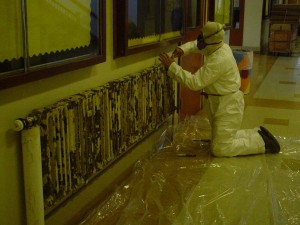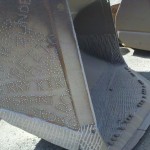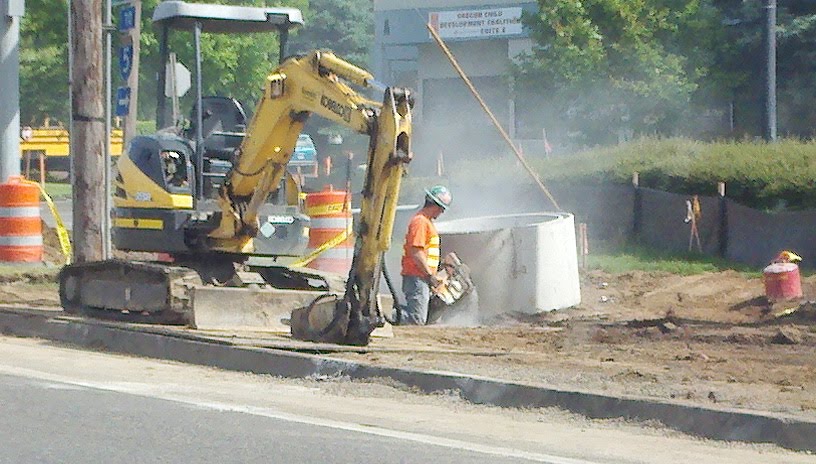Entries tagged with “air monitoring”.
Did you find what you wanted?
Fri 12 Oct 2012
Posted by admin under ACGIH, Air Monitoring, Chemical Exposure, Exposure, industrial hygienist, Management, PEL (Perm Exp Limit), TWA
Comments Off on Air Monitoring – Multiple samples throughout the day
When measuring by air sampling for a job task, or an employee’s personal exposure, how many samples should you take?
Sometimes it is easier to place one filter cassette (or media) on the employee for the duration of their day.  At the end of the shift, you collect your equipment, mail it to the lab, and they spit out a 8-hour time weighted average (8-hour TWA). This is simple and easy to understand.
However, if you have the time and resources, it is usually beneficial to obtain multiple samples throughout the day. Taking multiple samples allow you to:
- obtain peaks, lows, and anomalies.
- look at: set up & clean up activities (separate from daily tasks)
- measure multiple employees doing the same task (to better capture the job task)
- calculate your own time weighted average
- capture short term exposure levels (STELs), or excursion limits *
- choose appropriate PPE for short duration tasks
- determine if employees are “falsifying” the data (skewing the data high or low)
- reduce filter overloading (in some cases)
There are some reasons NOT to obtain multiple samples:
- collection limit constraints (sometimes the method of sampling does not allow for this type of multiple sampling)
- it can be costly
- it is very time consuming (and nearly impossible, if you have multiple pumps on multiple employees throughout the site)
- difficulty interpreting the data (the math, the inferences, etc)
If you are hiring an industrial hygienist to perform air monitoring, ask about multiple samples. It might be slightly more expensive, but the information and data might be worth the cost.
*ACGIH recommends that if the compound does not have a STEL, all airborne levels should not exceed 3x the 8-hour TWA as an excursion limit.
Thu 6 Sep 2012
Posted by admin under Admin Controls, Air Monitoring, Engineering Controls, Exposure, Federal OSHA, GHS, Hazard Communication, industrial hygienist, Management, MSDS, OSHA, PEL (Perm Exp Limit), Safety Policies, Training
Comments Off on When do you resample?
After performing an industrial hygiene survey (air monitoring), have you considered when you should resample? Here are some considerations that might help you in determining when.
- Are there specific rules that state when you must resample? For example, the construction lead standard (1926.62) states that you must resample yearly (or actually, that you can only use relevant results for one year).
- Has the process changedsince the last time you sampled? This one is hard to determine. Lot of things can change air monitoring results, here’s a “starter list” of things that can change a process.
- Different employee?
- Time of year? Summer versus winter? (closed up/open and humidity)
- Is a new tool in place?
- Has the ventilation changed?
- Have new controls been put in place? (administrative, systems operations)
- Has the product changed? Check the safety data sheet (aka MSDS).
- Are more (or less) employees exposed to this hazard? This might change some assumptions you have made about your risk.?
If you have air sampling performed, make sure you have a written report of your findings. Laboratory results without an explanation of how they sampled, where, # of employees, process description, PPE used, safety data sheets, etc….is worthless. You may remember is well enough, but OSHA will have a hard time believing that it is a similar exposure the next time you do the “exact same thing”.
Having this report and sharing it with the employees will fulfill (part of) the hazard communication standard requirement to employees.

Tags: air monitoring, air sampling, exposure monitoring, GHS, industrial hygiene, MSDS, OEL, OELs, OSHA, report, safety
Mon 2 Jul 2012
Posted by admin under Dermal, Hexavalent chromium, Management, Stainless Steel, Welding
Comments Off on Hardfacing – Chromium 6 – Picture of the day
If you use heavy equipment and need to move dirt, rocks or soil, look closely at the buckets. Many times they will be coated with a material called hardfacing. It is a durable (consumable) welding bead laid out in a pattern. This pattern (from what I am told) helps to extend the life of the bucket. Apparently the cost of putting this product on the buckets is well below the cost of replacing the bucket (or teeth, or whatever).
The hazard is really on during the application of hardfacing. See my earlier post here. Hardfacing contains stainless steel (approximately 25%?, but it varies). Heating the stainless steel releases chromium in it’s hexavalent form (Cr6).
If your buckets have this on their exterior, your employees are probably exposed to hexavalent chromium at some point in the year.
However, the pattern is an art & science. Look closely at the side of this bucket…I think I know where this welder got his inspiration.

Tags: air monitoring, bucket, chrome 6, Chromium 6, cr6, excavator, hexavalent chromium, industrial hygiene, loader, safety, welder, welding
Fri 1 Jun 2012
I had posted a few weeks ago about a recent sighting of silica exposures during concrete/asphalt cutting. Then, today, at a stoplight…there it is.
A worker was using a gas powered hot saw (cut off saw) with an abrasive blade to cut a concrete pipe. No respirator.

If you were me, what would you do? (Leave your answer in the comments section)
- call the company main office?
- stop and caution the employee?
- call OSHA?
- take a picture and post it for the world to see (check…ha)
- offer to buy a respirator
- perform air monitoring for them? (for free, of course.?)


